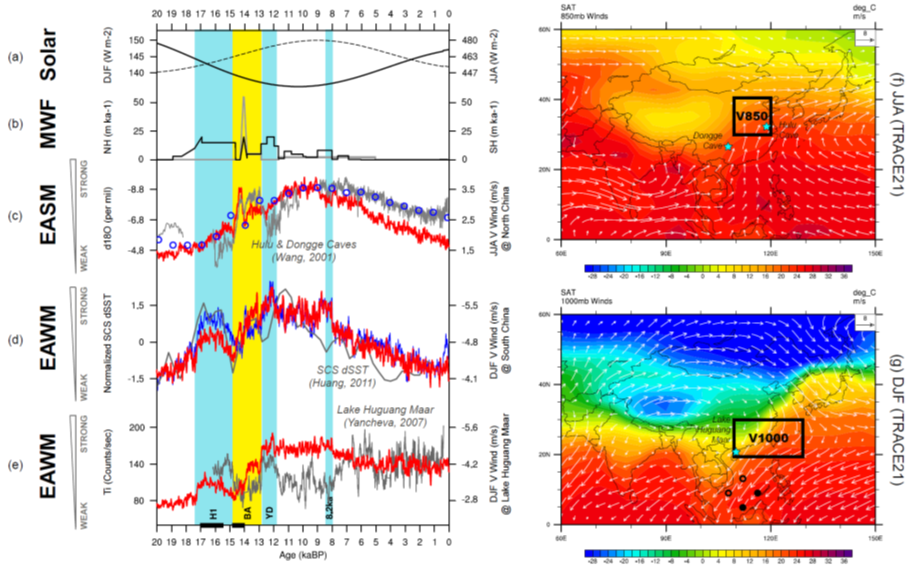Our faculty members Drs. Xinyu Wen, Zhengyu Liu, and coauthor published a paper on Nature Communications entitled “Correlation and anti-correlation of the East Asian summer and winter monsoons during the last 21,000 years”. They re-investigate the relationship between East Asian summer monsoon (EASM) and winter monsoon (EAWM). Their results reconcile the current debates on Asian summer and winter monsoon’s co-variability, which greatly improves our understanding of monsoon’s roles in the context of future climate change.
The monsoon system has great influences on the climates of China. The correlation between EASM and EAWM are commonly considered as negative correlations by climate communities, that is, anomalously strong EASM is associated with anomalously weak EAWM, and vice versa. However, this assumption, which was not confirmed, was widely applied to explaining problems of modern and paleo climate changes in the past decades. In recent years, a couple of proxy datasets challenge such an assumption. Climatologists started to re-consider this classical problem: Drs. Xinyu Wen and Zhengyu Liu lead a team to re-investigate this issue by performing a 21,000-year continuous simulation with all forcings and four sensitivity simulations with individual forcings such as orbital, fresh water flux, ice sheets, and greenhouse gases). It is found that the long-term variability of East Asian monsoons are dominated by two key processes: 1) slow varying procession results in positively correlated variations between EASM and EAWM at 10 thousand time scales; 2) over thousand year timescales, fresh water input over North Atlantic ocean, is the dominant factor. Moreover, EAWM and EASM are also influenced by the long-term variations of land ice-sheet and greenhouse gases during the past 21,000 years, but subtle.
In summary, Wen and Liu et al. (2016) suggest that EASM and EAWM are not necessarily negatively correlated all time. They are controlled by different physical processes on different time scales. These findings greatly improve our understanding of Asian monsoon dynamics, its influences in East Asian climate changes, and providing an independent 21,000-year-long benchmark for future Asian monsoon studies.
Paper Full Text: http://www.nature.com/ncomms/2016/160622/ncomms11999/full/ncomms11999.html
Key Figure:

Figure. Variability of EASM, EAWM, and associated climatic variables in the past 20,000 years. (a) Solar insolation at 45N; (b) Fresh water fluxes in NH and SH; (c) Observed EASM index (Wang, et al., 2001, grey), Simulated EASM index (red, definition see f), and Simulated d18O (blue circle); (d) Observed EAWM index (Huang, et al., 2011, grey), Simulated SST gradient index (blue), Simulated EAWM index (red, definition see g); (e) Observed EAWM index (Yancheva, et al., 2007, grey) and Simulated EAWM index followed Yancheva et al. (2007) (red); (f) Climatology of EASM in model; (g) Climatology of EAWM in model.
